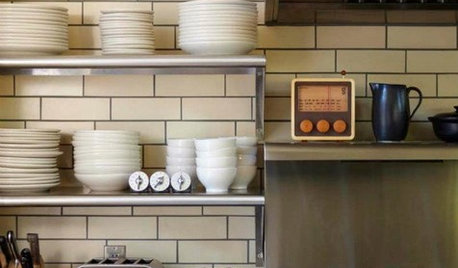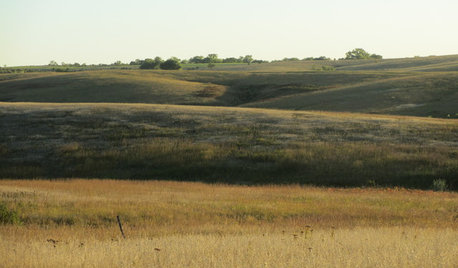Fermenting question - salt quantities?
pixie_lou
10 years ago
Related Stories

DECORATING GUIDESRoom of the Day: Elegant and Eclectic Salt Lake City High-Rise
Hand-blocked wallpaper sets a beautiful organic tone in this young professional’s apartment
Full Story
DECLUTTERINGFoolproof Ways to Declutter Your Kitchen
If you find yourself fumbling through cupboards to find what you’re looking for, it’s time to take action with these simple steps
Full Story
GARDENING GUIDESGreat Design Plant: Sambucus Nigra
Common elderberry is a highly adaptable shrub from the eastern U.S., with berries galore for wildlife and humans alike
Full Story
KITCHEN DESIGNCreate Your Own Checklist for a Well-Stocked Kitchen
Personalize the kitchen with your own must-haves from our list of top cooking tools, small appliances, pots, pans and more
Full Story
GREEN BUILDINGThe Big Freeze: Inventors Break New Ground to Keep Things Cool
Old-fashioned fridges can be energy guzzlers, but there are more eco-friendly ways of keeping food fresh, as these global innovations show
Full Story
GARDENING GUIDESHow to Get Your Prairie On
Have a field day with your landscape, even if you've got just a few modern containers on a paved path
Full Story
KITCHEN DESIGNKitchen Sinks: Antibacterial Copper Gives Kitchens a Gleam
If you want a classic sink material that rejects bacteria, babies your dishes and develops a patina, copper is for you
Full Story
BUDGETING YOUR PROJECTConstruction Contracts: What to Know About Estimates vs. Bids
Understanding how contractors bill for services can help you keep costs down and your project on track
Full Story
MOST POPULARHouzz Quiz: What Style of Kitchen Should You Have?
Should you be cooking up a storm in a modern, traditional, farmhouse or another style of kitchen? Take our quiz to find out
Full Story
LANDSCAPE DESIGN5 Reasons to Consider a Landscape Design-Build Firm for Your Project
Hiring one company to do both design and construction can simplify the process. Here are pros and cons for deciding if it's right for you
Full Story





digdirt2
rdback
Related Professionals
West Milford Landscape Architects & Landscape Designers · Forest Park Landscape Architects & Landscape Designers · Choctaw Landscape Contractors · Concord Landscape Contractors · East Patchogue Landscape Contractors · Nanuet Landscape Contractors · Pleasant Prairie Landscape Contractors · Salem Landscape Contractors · Secaucus Landscape Contractors · West Haverstraw Landscape Contractors · Ansonia Landscape Contractors · Philadelphia Roofing & Gutters · Thousand Oaks Roofing & Gutters · Ramona Driveway Installation & Maintenance · Crestwood Driveway Installation & Maintenancetheforgottenone1013 (SE MI zone 5b/6a)
pixie_louOriginal Author
naturegirl_2007 5B SW Michigan
digdirt2
readinglady
pixie_louOriginal Author
WazzyWaz
pixie_louOriginal Author
digdirt2
WazzyWaz
pixie_louOriginal Author
WazzyWaz
skeip
readinglady
2ajsmama
readinglady
digdirt2